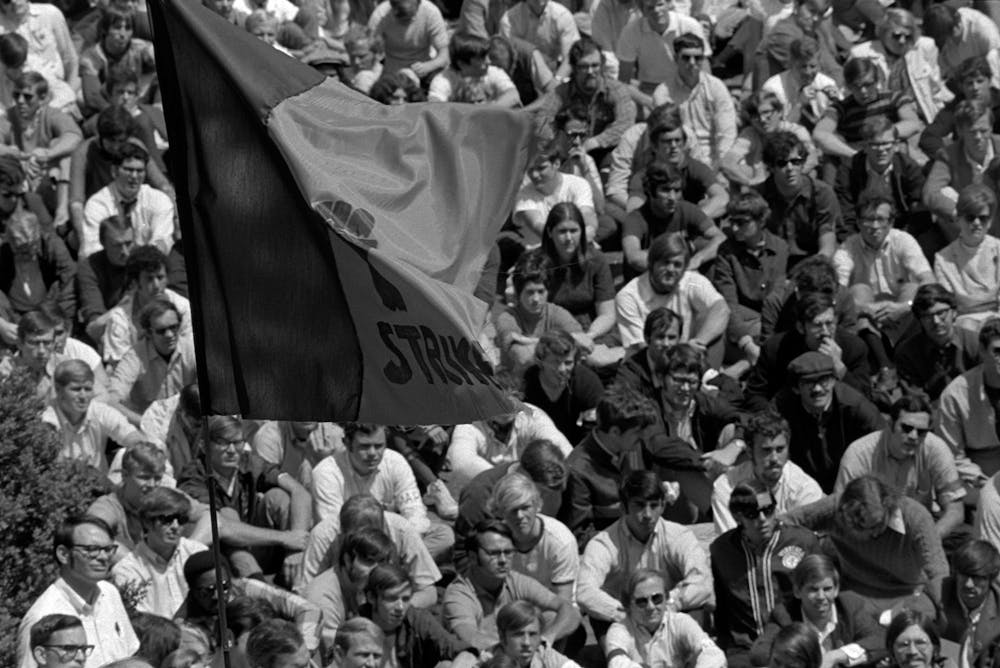The recent columns by Bryce Wyles and Emma Camp show that the left at the University is divided on free speech. An offensive demonstration by the right-wing Young America’s Foundation led Wyles to call on the University to “deny space to such repulsive displays.” Responding to Wyles, Camp made a liberal, Voltairean defense of the freedom of even detestable speech on Grounds. Camp characterized Wyles’s column as indicative of an “authoritarian streak” among college leftists, which, she argues, makes for bad optics — making them “appear volatile, dogmatic and anything but progressive.”
I agree with Camp. However, I think that her argument — based mostly in abstractions and optics — could resonate more with a left-wing audience if illuminated by history that appeals to leftist self-interest. To that point, I encourage University leftists with qualms about free speech to look to your Vietnam-era predecessors in the New Left movement on Grounds who opposed the censorship of unpopular speech because their speech was once unpopular. We should maintain their commitment to the First Amendment because, as University history proves, the left has skin in the game, too.
Antiwar speech has historically consigned many leftists to the ideological minority, if not a jail cell, like Charles Schenck and Eugene Debs. The first University leftists to oppose the presence of U.S. troops in Vietnam knew this well. As Julia Bolger writes in The Oculus, during the mid-1960s, the University’s student body “was overwhelmingly conservative” and supportive of the Vietnam War. In 1966, an anti-war student protest organized by the leftist Students for Social Action mustered just 23 members on the steps of Alderman Library, while an antagonistic crowd of 300 hurled insults and snowballs their way. Such a development reflects the absence of a strong leftist movement on Grounds at the time.
In his master’s thesis on the history of the New Left at the University, Thomas Hanna notes that the SSA was suppressed by Student Council through repeated denial of official recognition, and “as a condition for official recognition, SSA was forced to agree to'' certain restrictions. From 1966 to 1967, there was also significant censorship of The Cavalier Daily by Dean B.F.D. Runk, who, according to then-managing editor Richard Dyas, monitored its content and exerted influence over the paper by appointing “an Editorial Consulting Board, consisting of his own hand picked students.”
Hanna describes that Runk’s censorship led to a divorce between the University Press and The Cavalier Daily. Still, some University leftists, frustrated that existing publications “virtually ignore[d] issues” such as “the undeclared war in Vietnam,” founded the leftist Iconoclast in 1966 and The Virginia Weekly in 1967. The latter of the two, according to its founder, was “designed [to] transform the staid University of Virginia into the Berkeley of the South,” referring to Berkeley’s famous Free Speech Movement of the mid-1960s. According to author Dale M. Brumfield, the Weekly published “headlines from the rapidly emerging New Left movement, including … escalating anti-war fervor on campus.”
This “escalating anti-war fervor” eventually manifested in teach-ins, the founding of the Charlottesville Draft Resistance and an increase in faculty allyship — an anti-war petition amassed the signatures of 300 faculty members. It launched leftism into the mainstream at the University. The radical Anarchist and Progressive parties saw unprecedented successes in the 1968 and 1969 Student Council elections, respectively.
Growing anti-war sentiments culminated in a ten-day period of upheaval in May 1970 referred to as “May Days,” during which, Virginia Magazine describes “many classes were canceled, anti-war rallies swelled to the thousands, protesters occupied the Navy ROTC building, student marshals stood sentry against arson around the Academical Village, and billy club–wielding police stormed the Lawn and some fraternity houses, hauling dozens of fleeing students to jail.”
On the Alderman Library steps May 5, where 23 leftists had been pelted with snowballs four years prior, then-Student Council President James Roebuck presented demands of the Virginia Strike Committee to University President Edgar Shannon. The Committee demanded a public denouncement of the U.S. military’s incursion into Cambodia, as well as a commitment to racial and gender equality and workers' right to unionize. The first demand, however, was for students’ First Amendment rights to be guaranteed. Finally, on May 10, President Shannon publicly opposed the Vietnam War.
From 1966 to 1970, the New Left on Grounds evolved from a minority to a mass movement, thanks to leftist organizing made possible by First Amendment protections of free speech, press, assembly and petition. To challenge the University’s commitment to freedom of expression is to forget that our once-unpopular New Left predecessors fiercely demanded it. Recalling their values and success, we need to do the same.
Robert McCoy is a Viewpoint Writer for The Cavalier Daily. He can be reached at opinion@cavalierdaily.com.
The opinions expressed in this column are not necessarily those of The Cavalier Daily. Columns represent the views of the authors alone.







